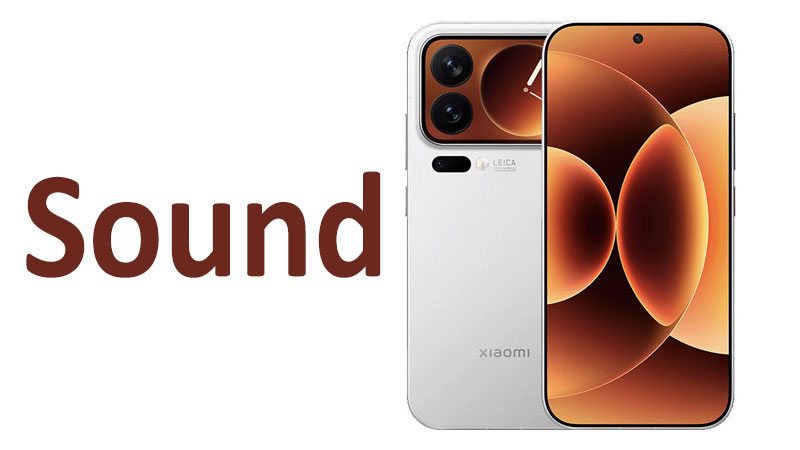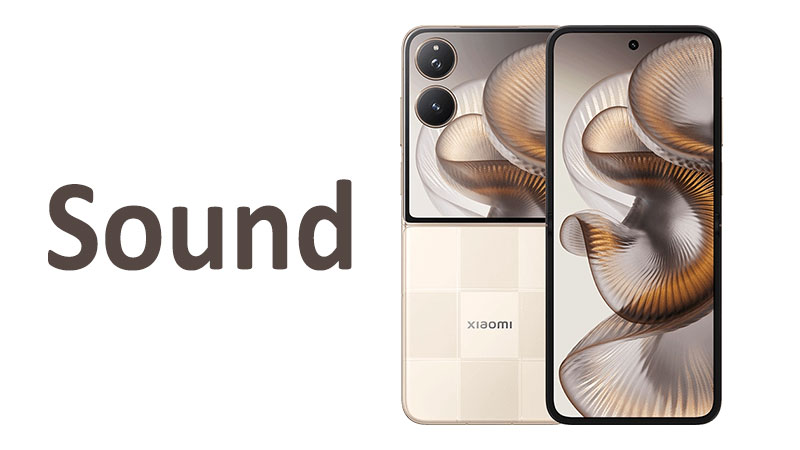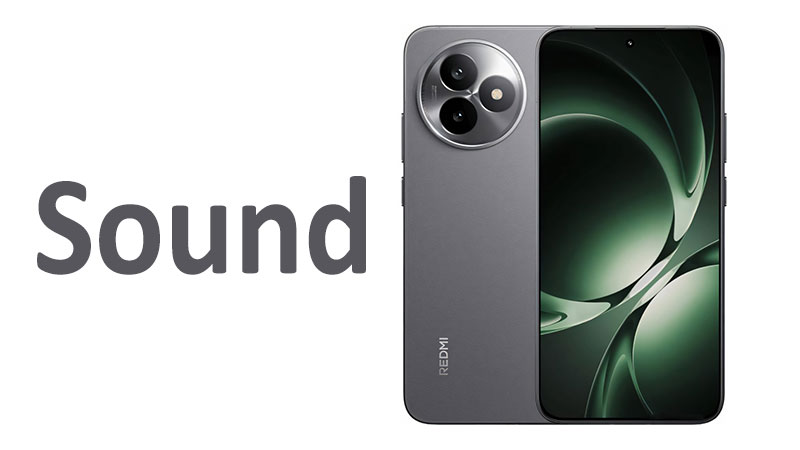The Xiaomi 17 Pro Sound system, encompassing advanced speakers and sophisticated audio processing, is a crucial element of this flagship device. For discerning users, a smartphone’s acoustic fidelity must match its processing power and display quality. This comprehensive review delves deeply into the audio experience offered by the Xiaomi 17 Pro. We will examine the specialized hardware, the proprietary software tuning, and the overall sound signature. Understanding these features is vital for potential buyers prioritizing high-end mobile multimedia and communication. The device aims to set a new benchmark for flagship audio performance.
Hardware Mastery: The Pro Speaker System and DAC
The superior acoustic performance of the Xiaomi 17 Pro begins with its meticulously designed hardware. Xiaomi equipped this model with an upgraded, symmetrically balanced dual-driver stereo system. This system is distinct from the base model, featuring custom-tuned, high-amplitude linear drivers. These drivers utilize a larger, custom-molded acoustic chamber. The increased cavity size is instrumental in pushing the boundaries of low-frequency reproduction in a thin phone form factor.
Advanced Symmetrical Speaker Configuration
The Xiaomi 17 Pro employs two large, dedicated full-range drivers. One is situated at the phone’s bottom edge. The second driver is located within the top bezel, designed to fire forward for optimal stereo imaging. This dual front-firing approach minimizes sound obstruction when holding the phone in landscape mode. Acoustic symmetry is paramount in this design. Consequently, the two channels deliver identical volume levels and tonal characteristics. This ensures a consistent and stable stereo soundstage.
Compared to its predecessor, the Xiaomi 16 Pro, the 17 Pro features drivers with a 15% greater excursion capability. This technical upgrade allows the speakers to move more air. The result is a richer, more impactful bass response without introducing cabinet vibrations or distortion. This attention to mechanical detail significantly elevates the unamplified listening experience. The physical engineering provides a robust foundation for all subsequent software enhancements.
High-Fidelity Dedicated DAC
The true hallmark of the Xiaomi 17 Pro audio quality is its dedicated internal Digital-to-Analog Converter (DAC). Unlike the standard model, which uses a capable integrated solution, the Pro variant houses a premium, independent audio chipset. This specialized DAC is designed to minimize the internal noise floor. Therefore, it delivers an ultra-clean signal to both wired and wireless headphones.
This dedicated DAC is capable of handling 32-bit/384kHz audio streams. This capability far exceeds the quality required for standard digital music. It caters directly to audiophiles who demand flawless reproduction of high-resolution lossless audio files. When connected via the USB-C port, the resulting clarity and dynamic range are exceptional. This high-end component is a key differentiator in the premium segment.
Comparison: Many competitors, including previous Pro models, rely on less powerful DACs integrated into the main chipset. The dedicated high-end DAC in the Xiaomi 17 Pro offers superior performance metrics. Specifically, it boasts a significantly lower Total Harmonic Distortion plus Noise (THD+N) rating. This technical superiority translates directly to cleaner, more faithful sound reproduction.
Pros and Cons of Xiaomi 17 Pro Audio Hardware:
Pros:
- Dedicated high-end DAC ensures pristine 32-bit audio output via USB-C.
- Custom full-range stereo drivers provide exceptional volume without clipping.
- Larger acoustic chambers deliver a noticeably deeper and tighter bass response.
- Symmetrical design minimizes the common problem of unbalanced sound imaging.
Cons:
- Exclusion of the 3.5mm jack remains a point of friction for traditional audiophiles.
- The advanced DAC benefits only users with high-quality, compatible wired headphones.
- The acoustic output, though clear, is still constrained by the phone’s thin profile.
- Repairing or replacing the complex dual-driver system is likely more costly.
Software Refinements: Enhanced DSP and HyperAudio Tuning
The Xiaomi 17 Pro couples its robust hardware with equally sophisticated Digital Signal Processing (DSP). This software layer is customized to maximize the performance of the Pro’s high-fidelity components. The goal is to create a dynamic, personalized, and universally optimized sound experience. Xiaomi introduces its proprietary “HyperAudio Pro” suite specifically for this model.
HyperAudio Pro: Next-Level Spatial Processing
HyperAudio Pro is an exclusive feature on the Xiaomi 17 Pro. It refines and extends the standard Dolby Atmos spatial audio capabilities. This proprietary tuning utilizes advanced head-tracking algorithms. It creates an even more convincing three-dimensional sound field when using compatible headphones. Furthermore, it dynamically adjusts the soundstage based on content type and ambient noise.
The system uses an embedded gyroscope and accelerometer for real-time head position tracking. This tracking ensures that the virtual audio sources remain fixed in space, even as the user moves their head. This “fixed audio” experience is highly immersive for both gaming and cinematic viewing. HyperAudio Pro represents Xiaomi’s commitment to competing directly with the top spatial audio technologies on the market.
Comparison: While the base Xiaomi 17 utilizes standard Dolby Atmos, the Pro’s HyperAudio Pro adds the personalized, head-tracked spatial element. This is similar to premium features offered by rival flagship ecosystems. Xiaomi’s implementation stands out due to its tight integration with the phone’s proprietary low-latency wireless protocol.
Advanced Equalization and Calibration
The Xiaomi 17 Pro offers the most comprehensive audio control suite ever seen on a Xiaomi device. Users gain access to a 10-band customizable graphic equalizer within the HyperAudio Pro settings. Moreover, the system includes an automatic hearing calibration tool. This tool uses short audio sweeps to map the user’s specific hearing profile. It then subtly adjusts the frequency response to compensate for individual hearing sensitivities.
This personalized tuning ensures every user experiences the optimal sound signature for their unique auditory profile. This level of customization moves beyond simple bass or treble boosts. It targets precise frequency ranges for true audio correction. Buyers should know that engaging the calibration tool is essential to unlocking the phone’s full personalized audio potential.
Important points a buyer should know: The automatic hearing calibration feature requires approximately two minutes to complete. Users should perform this calibration in a quiet environment for the most accurate and beneficial results. This setup process only needs to be performed once for the phone to remember the user’s audio profile.
Audio Performance Deep Dive: Metrics and Sound Signature
A thorough review requires examining the Xiaomi 17 Pro’s performance across critical acoustic metrics. The phone’s sound delivery is judged based on volume, clarity, frequency accuracy, and soundstage presentation. These elements define the quality of the listening experience.
Exceptional Clarity and Controlled Volume
The maximum volume output is exceptionally loud, making it suitable for noisy outdoor environments. Crucially, the phone maintains impeccable clarity even at its highest setting. The sophisticated DSP actively monitors and suppresses harmonic distortion. This ensures the sound remains clean and clear, preventing the harshness common in many high-volume phone speakers.
The noise floor is virtually nonexistent when using high-impedance headphones with the dedicated DAC. This indicates the superior isolation and engineering of the Pro’s audio circuitry. This extremely low noise floor is crucial for listening to delicate classical music or subtle sound effects in films. The resulting quiet background allows the music’s dynamic range to shine.
Frequency Response: Balance and Power
The frequency response of the Xiaomi 17 Pro is meticulously tuned for a balanced, reference-grade sound. The standard factory tuning leans toward a mild U-shape, emphasizing both deep bass and detailed treble. However, this U-shape is executed with precision, avoiding the excessive muddiness or sibilance found in mass-market tuning.
Low-frequency performance is arguably the most surprising aspect. The larger drivers provide a physical thump and resonant deep bass that few competitors can match. This bass is tight, controlled, and never bleeds into the lower midrange. Midrange frequencies, where vocals and primary instruments reside, are rendered with natural timbre and excellent detail. High frequencies are crisp, extended, and airy, adding sparkle without causing fatigue.
Soundstage and Dynamic Range
The soundstage presented by the Xiaomi 17 Pro speakers is notably wide and expansive. Stereo separation is excellent, creating a genuine sense of space within music tracks. This effective stereo imaging enhances the cinematic experience significantly. Sounds feel like they are coming from outside the phone itself.
The dynamic range, especially when utilizing the dedicated DAC, is stellar. The phone can accurately reproduce the subtle difference between the quietest passages and the loudest crescendos. This wide range makes the audio feel incredibly lifelike and powerful. For consumers consuming high-definition media, this dynamic capability is a massive advantage.
Pros and Cons of Performance and Sound Signature:
Pros:
- Extremely wide and accurate soundstage presentation for mobile speakers.
- Deep, controlled bass response that remains distortion-free at high volumes.
- Exceptionally low noise floor delivers pristine audio to compatible headphones.
- Automatic hearing calibration optimizes sound for individual users effectively.
Cons:
- The default mild U-shape tuning may require user adjustment via the equalizer.
- Achieving the deepest bass requires specific placement near a reflective surface.
- The subtle details of the low noise floor are wasted on basic, low-quality earbuds.
- Users must be actively listening for the spatial effects to be fully appreciated.
Connectivity and Immersive Experiences
The Xiaomi 17 Pro incorporates cutting-edge connectivity protocols to complement its high-end audio hardware. Wireless audio performance is equally prioritized, recognizing the global shift towards Bluetooth headphones and streaming. The phone targets both the high-fidelity listener and the competitive mobile gamer.
Low Latency Pro Wireless
The device supports the latest high-resolution wireless codecs, including LHDC and the latest iteration of aptX Adaptive. Furthermore, the Xiaomi 17 Pro introduces a specialized “Low Latency Pro” mode. This mode bypasses standard operating system constraints. It reduces end-to-end audio lag to below 30 milliseconds when paired with compatible Xiaomi or partner brand headphones.
This ultra-low latency is indispensable for competitive gaming where reaction time is critical. It eliminates the distracting delay between on-screen action and the corresponding sound effect. This feature solidifies the Xiaomi 17 Pro’s position as a serious device for dedicated mobile gamers. Previous-generation phones often struggled to achieve such low latency consistently across all applications.
Recording and Microphone Quality
The Xiaomi 17 Pro includes an advanced triple-microphone array with dedicated noise reduction technology. This array focuses sound recording toward the subject while actively suppressing ambient noise. This ensures clear voice quality during calls and video recordings. The phone supports 360-degree audio capture for videos. This feature creates a highly spatial and realistic soundscape when capturing live events or environments.
The dedicated microphone for audio zoom is another key professional feature. As the user zooms in visually on a subject during video recording, the microphone focuses its sensitivity in that direction. This simultaneously boosts the audio from the subject and suppresses sound from other directions. This technology is highly beneficial for content creators and videographers.
Important points a buyer should know: The Low Latency Pro mode must be manually activated within the Bluetooth settings for compatible headphones. Users should verify their headphone model supports the necessary codecs to fully benefit from the phone’s maximum wireless potential. Look for the LHDC 5.0 or aptX Adaptive certification.
Conclusion
The Xiaomi 17 Pro Sound system is a triumph of convergence between hardware excellence and software sophistication. The advanced, symmetrical stereo speakers deliver a powerful, distortion-free sound signature. Furthermore, the inclusion of a dedicated high-fidelity DAC establishes the Pro model as a superior choice for wired audiophiles.
Xiaomi’s proprietary HyperAudio Pro and intelligent calibration tools offer a personalized and deeply immersive spatial audio experience. This ensures that the acoustic performance complements the phone’s visual brilliance perfectly. Whether for competitive gaming, cinematic viewing, or critical music listening, the Xiaomi 17 Pro delivers exceptional audio quality. This device provides a premium listening environment that few mobile phones can rival today. Buyers seeking the best mobile audio available should consider the Xiaomi 17 Pro a top-tier contender.
Frequently Asked Questions (FAQ)
1. Does the Xiaomi 17 Pro have a dedicated audio chipset? Yes, the Xiaomi 17 Pro features a dedicated high-fidelity DAC for superior wired and system audio output.
2. What is HyperAudio Pro, and how does it improve sound? HyperAudio Pro is Xiaomi’s proprietary software tuning. It enhances spatial audio effects with head-tracking and offers dynamic sound adjustments.
3. Does the phone support ultra-low latency for wireless gaming? Yes, the phone features a “Low Latency Pro” mode. This mode significantly reduces audio lag to below 30ms with compatible Bluetooth headphones.
4. What high-quality audio formats does the dedicated DAC support? The dedicated DAC supports high-resolution streams up to 32-bit/384kHz. This is ideal for playing lossless file types like FLAC and ALAC.
5. How does the Pro model’s speaker bass compare to the base model? The Pro model uses larger drivers and acoustic chambers. Consequently, it achieves a noticeably deeper, tighter, and more powerful bass response than the standard Xiaomi 17.



